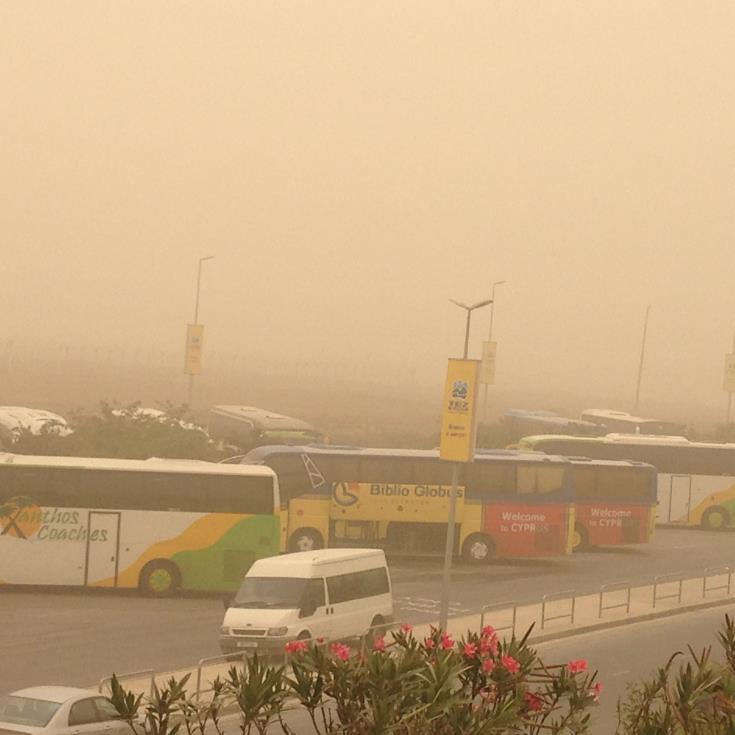The major dust event that has affected Cyprus since April 3, persists and the plume, which originates from the Saharan desert, has covered all of the eastern Mediterranean basin and is persisting over Cyprus for the third day in a row, the Cyprus Institute has said, warning people to remain indoors to avoid it.
In the meantime, the Department of Labour Inspection also issued a press release saying that high concentrations of dust continue be observed in the air on Wednesday, according to measurements from ground Stations of the Air Quality Monitoring Network.
It said the public and particularly any vulnerable groups of population (children, older people, and the infirm) are urged to avoid circulating in open spaces until the observed episode has elapsed, as the small size of respirable particles in dust may have negative effects on human health.
Employers must take appropriate measures (organisational and/or technical) after assessing any risks that their employees may face while working in open spaces, and it is recommended that workers in such spaces use appropriate means of personal protection.
In detail, the latest hourly dust concentrations measured at 8:00 am in the following areas are:
Nicosia: 157.2 μg/m3
Limassol: – μg/m3
Larnaca: 139.4 μg/m3
Paralimni: 153.5 μg/m3
Paphos: 122.1 μg/m3
Zygi: 75.1 μg/m3
Ayia Marina Xyliatou: 86.1 μg/m3
It is noted that ‘dust’ refers to respirable particulate matter of a diameter smaller than 10 μm (PM10) in the air. According to the relevant legislation, a limit value not to be exceeded is set for the daily average concentrations at 50 μg/m3 (micrograms per cubic meter).
Meanwhile, according to the Cyprus Institute, the major dust event that hit Cyprus since April 3, persists and the plume, which originates from the Saharan desert, has covered all of the eastern Mediterranean basin and is persisting over Cyprus for the third day in a row. Such events are common during springtime when the temperature gradient between the hot Sahara region and the relatively cold Mediterranean Sea is large enough to allow southern air masses to move northerly.
Sun photometric data recorded at the Nicosia station of the Cyprus Atmospheric Observatory (CAO) show that visibility is reduced to 16 km instead of the 38 km we typically experience. The particles that prevent us from enjoying the view of mountains and the Cypriot sky are a threat to our health as well. The PM10 concentration measured in Nicosia at CAO reached 400 μg/m3. It reached the highest concentration measured since CAO started operating in Nicosia one and a half years ago. PM2.5, which is more harmful to health because it can reach deeper into the lungs, reached 85 μg/m3. As a point of measure, the World Health Organization (WHO) suggests that the daily exposure to PM10 and PM2.5 should not exceed 45 and 15 μg/m3, respectively.
The dust layer is not found just at ground level. By taking advantage of a technology similar to the radar the police is using to monitor car speed on the road, the Cyprus Institute has noticed that currently the layer extends up to 4 km high and, according to a forecast by the University of Athens, it will continue for the entire week.
The Cyprus Institute notes that, even though dust episodes are hazardous for our health, they are beneficial for nature. Dust contains minerals that are necessary for the ocean, acting as a natural fertilizer. It is part of a natural process that without, ocean life would be poorer.
The Institute urges people to stay safe, and the best way is to just keep windows and doors closed, whether at home, in the office or in the car. “This simple trick can prevent most of the hazardous dust to stay away, while the Mediterranean Sea is being fertilized to spawn new life,” it concluded.
(CNA)






